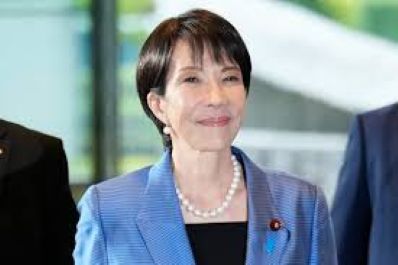
Japanese Prime Minister has re-ignited the tense Sino-Japanese relations that underscore the region’s volatile politics
By Tom Arms |London
Japanese Prime Minister Sanae Takaichi has re-ignited the tense Sino-Japanese relations that underscore the region’s volatile politics.
The roots of these tensions go back centuries and will doubtless last for centuries more. At the moment the main players are China, Japan, Korea and Taiwan with America playing an important peripheral role.
Korea and Japan have a long history involving cultural links, wars and cruel colonization. According to many historians, the Japanese imperial family originated in Korea. It is a fact that many prominent Japanese have Korean genetic roots.
Much of Chinese culture reached Japan through the Korean Peninsula. This included Buddhism, Chinese writing, laws, government models, horsemanship, metallurgy, iron-working, architecture, construction and agricultural techniques.
From the Japanese point of view, Korea offered an invasion route into China. In the 16th century the Japanese fought a four-year war against Korea and were only defeated when the Chinese joined the fight on the side of the Koreans.
Then, of course, there is the Japanese colonial period from 1910 to 1945 with the bitter Korean memories of slave labor and “comfort women.”
Korea also has its problems with China with whom it has had a long on-off relationship which for centuries involved tributes and recognition of Chinese suzerainty. A key element in Korean foreign policy (north and south) is summed up by the word “sadae” which is interpreted as “serving the great” which in turn means that Korea will always prioritise good relations with China to secure protection and legitimacy.
Taiwan is a relatively more recent issue for both China and Japan. Its indigenous inhabitants—Austronesians—are neither Japanese nor Chinese. They are genetically and linguistically related to the Filipinos and Indonesians. It wasn’t until the 16th century that the Chinese started to take a peripheral interest in the island. Then the Dutch arrived and called it Formosa. This spurred the Ming Dynasty to action. They booted out the Dutch and shortly afterwards formally annexed the island.
In the 19th century the Japanese started thinking of themselves as an imperial Asian power and Taiwan was viewed as the southern anchor of the Japanese archipelago. It was thus seen as vital to the protection of the “home islands” as well as protecting the sea lanes to America and Europe. After the first Sino-Japanese War in 1894-95, the island was ceded to Japan by China and it remained Japanese until the end of 1945 when the peace treaty returned the island to China. In 1949 Chiang Kai-shek fled to Taiwan and from there claimed to represent all of China.
The Japanese no longer claim Taiwan. But many strategists regard it as the southern entrance to the Japanese archipelago and that if it was occupied by China that would—in the words of Sanae Takaichi—be “a survival threatening situation” and would justify the use of the Japanese military.
This, of course, brings us to the historic relationship between China and Japan. For a long time the relationship involved the Chinese fighting off pesky Japanese pirates who were more of an annoyance than a threat. Then came the Sino-Japanese war which stretched from 1937 to 1945 and led to the deaths of between 15 and 20 million Chinese. The Chinese have never forgiven nor forgotten the Japanese atrocities of World War Two. Neither have the Koreans (north and south).
Enter the Americans whose initial concern was to crush Japanese militarism. They even imposed a constitution which prohibited the Japanese from becoming involved in foreign wars. However, concern about Japanese militarism was quickly replaced by fear of communist China. This led first to support for Chiang Kai-shek in Taiwan and then, very quickly, to the Korean War and the division of the Korean Peninsula.
The Americans have as many troops based in South Korea and Japan (80,000) as they do in Europe. And there are an additional 60,000 US troops “over the horizon” in Guam and Hawaii. Japan on its own is an “unsinkable aircraft carrier” off the coast of China.
Read: Observations of an Expat: Court with a Backbone
________________
 Tom Arms is foreign editor of Liberal Democrat Voice. He also contributes to “The New World” and is the author of two editions of “The Encyclopedia of the Cold War” and “America Made in Britain.”
Tom Arms is foreign editor of Liberal Democrat Voice. He also contributes to “The New World” and is the author of two editions of “The Encyclopedia of the Cold War” and “America Made in Britain.”




